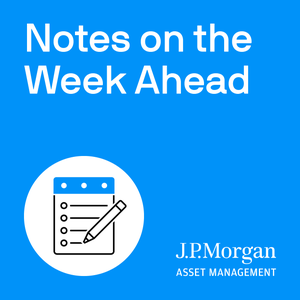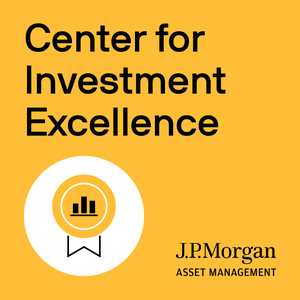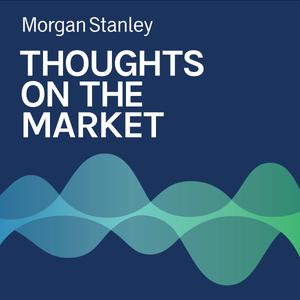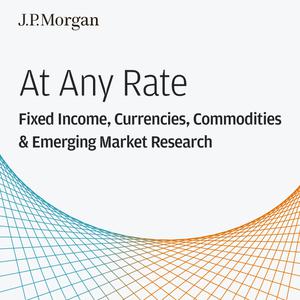
Notes on the Week Ahead
Dr. David Kelly
Listen to Dr. David Kelly’s, Chief Global Strategist thoughts on the upcoming week ahead.
- 10 minutes 11 secondsThe Causes and Consequences of More Volatile Bonds
Since the advent of modern financial markets, bonds have always had the reputation of being conservative – rather like an elderly family lawyer in a leather-bound chair frowning at more jumpy and excitable stocks. Bonds would never make you rich. However, they would provide you with a moderate, steady and dependable income.
This reputation was challenged in the 1970s and 1980s by Treasuries yielding more than 10%, in the wake of high inflation, and the explosive growth of the high-yield market. In the decades that followed, yields drifted down in parallel with inflation but investor excitement was maintained by a steady stream of capital gains as well as income. However, once monetary easing hit its peak in the days following the Great Financial Crisis, high-quality bond yields fell to levels that promised very little income and, at best, modest capital losses, assuming yields eventually recovered.
22 April 2024, 6:12 pm - 9 minutes 30 secondsThe Dollar Dynasty
Growing up in New England, our sons had a privileged childhood as sports fans and particularly as football fans. Between 2001 and 2020, the New England Patriots, coached by Bill Belichick and with Tom Brady at quarterback, competed in nine super bowls and won six of them - a truly extraordinary performance in a league of 32 teams. It is all the more impressive because of the NFL’s efforts to make the league competitive. These include the salary cap, which forces all teams to spend roughly the same on their rosters, and the draft, which awards the top picks to the worst teams from the year before.
And yet the dynasty continued for almost two decades, with the Patriots winning many games that they should have lost due to their own confidence and their opponents doubts. And the supposedly eroding effects of low draft picks seemed to have little impact on the team, as relatively unknown players found a way to win.
15 April 2024, 10:22 am - 9 minutes 7 secondsThe Right Time to Cut Rates
Next Monday, I once again get to lace up my shoes and join my friends from the Dana-Farber team in running the Boston Marathon. This year will be particularly special, as both of our sons are also running the race.
One of the advantages of being an older member of the team, (and I can testify to plenty of disadvantages), is that you accumulate advice that you can share with younger members, particularly those who are running their first marathon. One such piece of advice is to drink before you are thirsty and to eat before you are hungry.
By the time you are thirsty, when running a marathon, you are likely severely dehydrated and low on electrolytes, causing, at best, a sharp deterioration of your performance. By the time you are hungry, your blood sugar will probably be too low, making the rest of the race slow and painful. In short, in long-distance running, one key is to make decisions before it feels like you need too.
8 April 2024, 3:40 pm - 11 minutes 34 secondsWage War
When I was nine, my father was elected to the Irish parliament and joined the new government. Not long after that, my history teacher, a man of the opposite political persuasion, was expounding on the Norman conquest of Ireland and the attempts of the local Irish clans to wage war against them….”not like the “wage war” we have with the current government” he said, finding humor in a rather dull subject. I, being an overly sensitive child, took this as a terrible insult to my father and promptly burst into tears, whereupon he sent me out into the hall for disturbing the peace.
25 March 2024, 3:57 pm - 12 minutes 32 secondsDot-Plot Danger and QT Limits
This week, investors will be focused on the Fed’s second Federal Open Market Committee (FOMC) meeting of the year. They are widely expected to make no change in interest rates. However, Fed communications will provide guidance on two important subjects: First, they will update their summary of economic projections and their “dot-plot” forecast for the federal funds rate. Second, and particularly in Chairman Powell’s press conference, they will likely provide some further hints on when and how they could begin to phase out quantitative tightening. While their messaging will likely continue to point towards monetary easing in the months ahead, the implied timing and extent of that easing could have major impact on markets.
18 March 2024, 3:59 pm - 10 minutes 47 secondsFrom Business Cycle to Stretched-Out Expansion
Financial reporters and market strategists often argue about whether we are “early-cycle”, “mid-cycle” or “late-cycle”. However, these perspectives are based on an outdated model of how the U.S. economy behaves. In a pure “business-cycle” paradigm, the U.S. economy would, today, be in the late innings of an economic expansion that must naturally end rather soon. However, a more realistic model of today’s economy suggests that this expansion could continue for some time more and that, when it ends, it will be because of some financial, environmental or geopolitical shock rather than the inevitable result of the age and stage of the expansion. This doesn’t negate the need for diversification. However, it does suggest that a portfolio should be stress-tested mostly against how it would react to a downturn triggered by non-economic shocks.
11 March 2024, 3:47 pm - 12 minutes 54 secondsJapanese Lessons
On Friday, December 29th, 1989, the Nikkei 225 stock index hit an all-time high of 38,957. It then began to fall and it took until February 22nd of this year, more than a third of a century later, to reach this level again. Today, for the first time, it closed above 40,000.
This ultra-long bear market in Japanese stocks was accompanied by the collapse of a colossal property bubble and was followed by decades of economic stagnation, rising government debt and periodic deflation. While Japan still faces many challenges today, there are signs that it is turning a corner from both an economic and financial perspective. However, decades of Japanese economic and financial malaise provide some powerful lessons for Japan itself and for governments, monetary authorities and investors around the world.
4 March 2024, 9:27 pm - 9 minutes 13 secondsThe Investment Implications of the Migration Surge
In last week’s article and podcast, I looked at the potential path for the U.S. economy over the next two years, noting that the outlook suggested a very tight labor market throughout. This would be a generally healthy outcome for the country, boosting economic growth and productivity and supporting solid wage growth. To the extent that it maintained pressure on profit margins and limited monetary easing, it would be less favorable for investors. However, a number of readers asked the very reasonable question of whether my analysis took account of the recent migration surge at our southern border.
26 February 2024, 5:18 pm - 12 minutes 37 secondsThe Pressures of a Full Employment Economy
I spent most of last week fighting with a model.
Before anyone starts googling “Nerdy Economist in Fashion Week Brawl”, I should clarify. I was fighting with a macroeconomic model that insisted on telling me something I didn’t believe. To be precise, it was projecting that, given the recent and projected pace of U.S. economic growth, the unemployment rate would slide to 3.0% by the end of 2025.
This I don’t believe for reasons I’ll explain. But the changes in assumptions necessary to produce a more reasonable answer can tell us a lot about the likely path of economic growth, inflation, interest rates, corporate profits and the dollar over the next two years with significant implications for financial markets and investing.
20 February 2024, 9:37 pm - 10 minutes 41 secondsWill Job Market Strength Delay the Inflation Slide?
I think of myself as a pretty punctual person. I get impatient when others are late and I don’t give myself much time to spare when catching a flight. But sometimes, like when spending time with family, it’s OK to run a little behind schedule.
One month into 2024, the economic slowdown appears to be running behind schedule. Growth is stronger than expected, the labor market is tighter and our forecast for inflation to hit 2% by the end of the year looks less certain. But for investors, it should be all good. Our 2.0.2.4. forecast of 2% growth, 0 recessions, inflation falling to 2% and unemployment at around 4% is now looking a little more like 2+.0.2+.4-. But it still rounds to 2024, leaving plenty of opportunity for long-term investors.
5 February 2024, 4:04 pm - 9 minutes 17 secondsToo Much Growth for Early Easing
This Friday, the groundhog will emerge unwillingly from his lair, examine the available evidence, that is to say, the presence or absence of his shadow, and, in all probability, reject any speculation about an early spring - at least for the next six weeks. According to USA Today, this has been the groundhog’s prediction in 107 of the last 127 years, or 84% of the time. That being said, the weather channel is forecasting “considerable cloudiness” over Punxsutawney, PA on February 2nd, so we might still get lucky.
29 January 2024, 4:43 pm - More Episodes? Get the App
Your feedback is valuable to us. Should you encounter any bugs, glitches, lack of functionality or other problems, please email us on [email protected] or join Moon.FM Telegram Group where you can talk directly to the dev team who are happy to answer any queries.
 Eye On The Market
Eye On The Market
 Center For Investment Excellence
Center For Investment Excellence
 UBS On-Air: Market Moves
UBS On-Air: Market Moves
 Making Sense
Making Sense
 Thoughts on the Market
Thoughts on the Market
 At Any Rate
At Any Rate